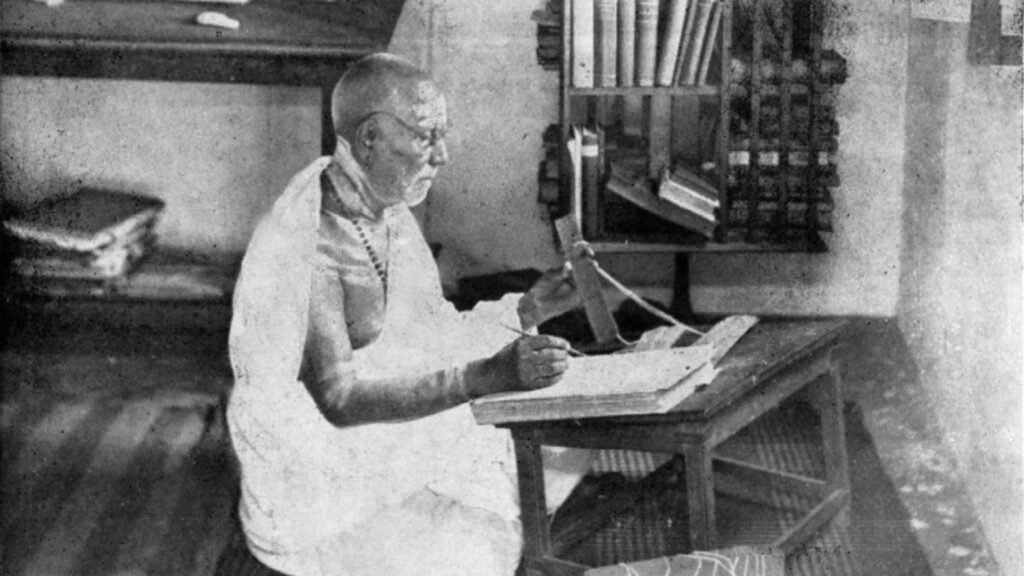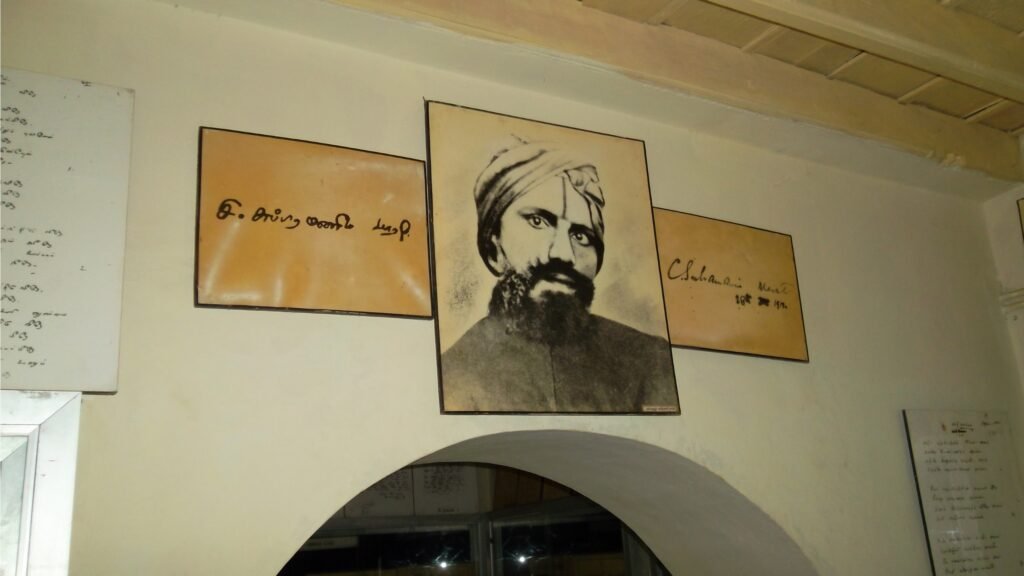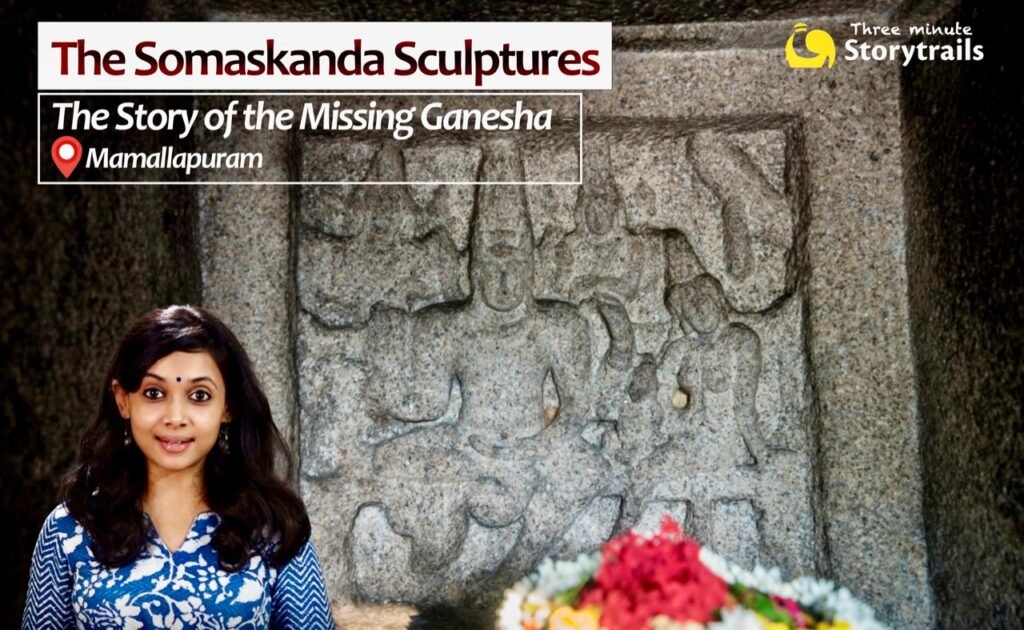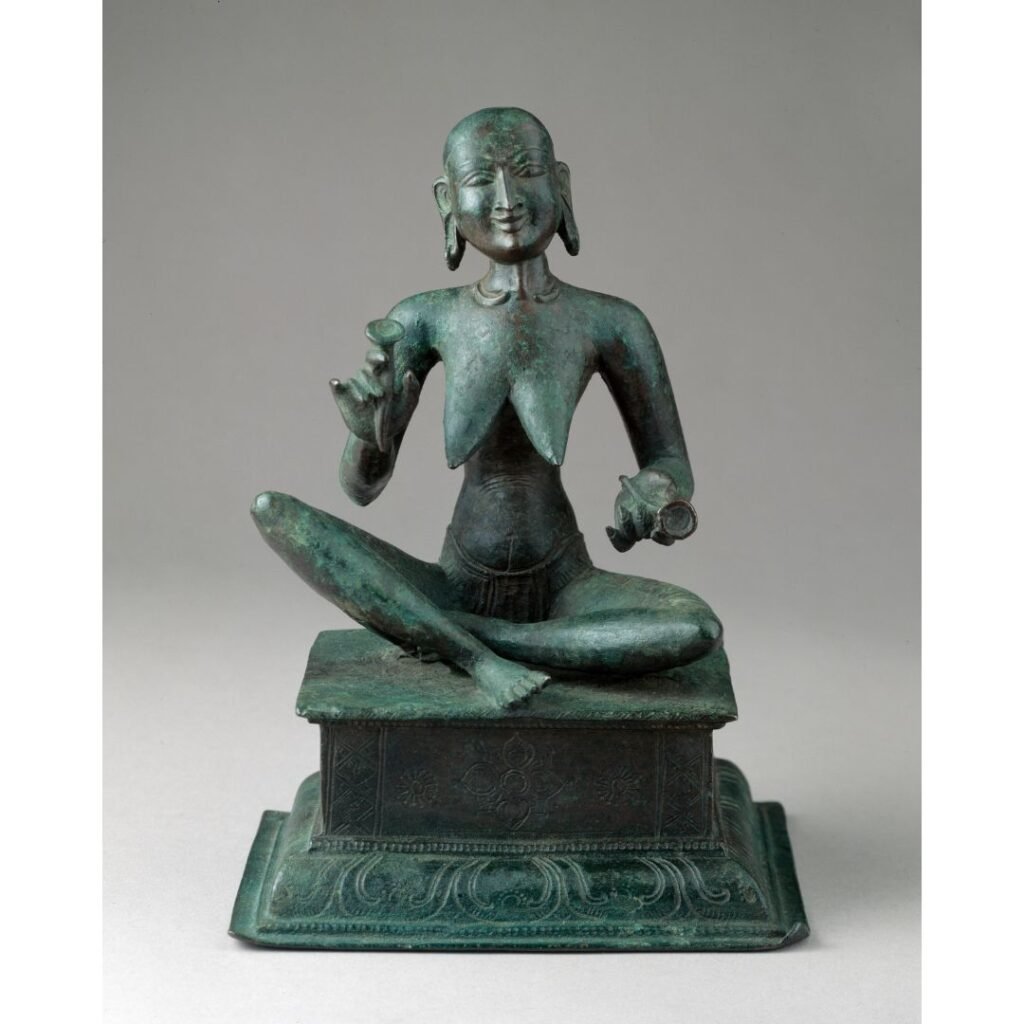
This striking exhibit at the Metropolitan Museum of Art, New York is a 13th -century Chola bronze from India, depicting a revered poet-saint named Karaikal Ammaiyar. She belonged to a group of Saivite (Shiva-worshipping) saints classified as the ‘Nayanmars’. There were 63 of them, all part of the Bhakti Movement school of Hinduism. Before we tell her story, a quick word about the Bhakti Movement –
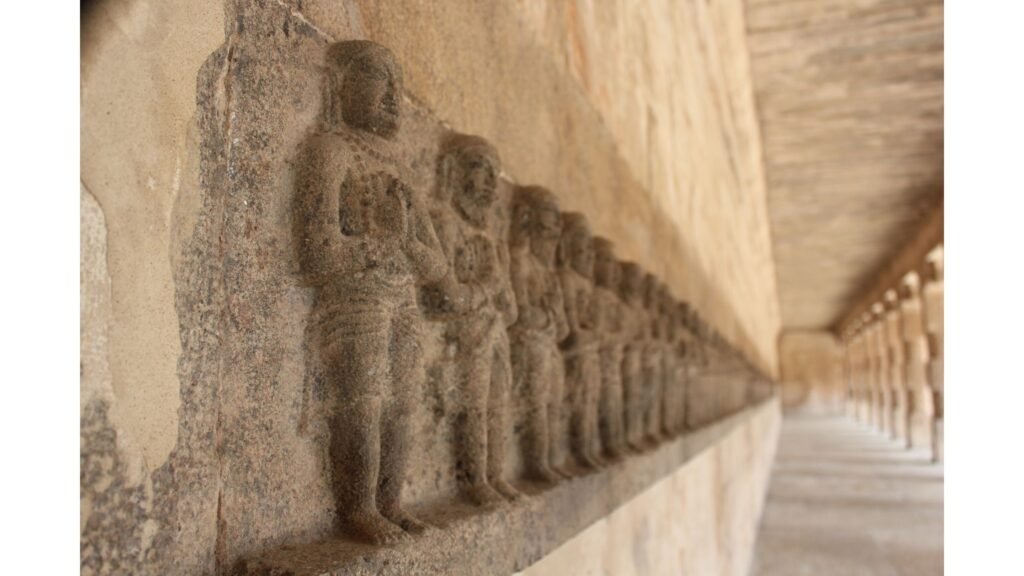
Hinduism has always been the majority religion of India. But between the 3rd century BCE and 6th century CE, it faced stiff competition from Jainism and Buddhism. However, by the 7th century, Hinduism underwent a renaissance through the Bhakti Movement and attracted a huge following. The movement had no hierarchical structure but propagated a broad philosophy through several independent religious teachers. The common underlying message was simple: ‘surrender absolutely to God, and He will take care of everything’. The Nayanmars were some of the earliest ambassadors of the movement. Karaikal Ammaiyar was one of them.
Punithavathi was the daughter of a rich merchant from Karaikal in the Chola kingdom, who married another rich merchant named Paramadatta. She was stunningly beautiful and theirs was a loving relationship. Early one morning, Paramadatta went to the market, where an acquaintance (in some versions, his father-in-law) offered him a gift of two delicious-looking mangoes. Paramadatta promptly sent them home with a message that Punithavathi could serve them after lunch. Shortly thereafter, a hungry Saivite Monk appeared at Punithavathi’s doorstep. Lunch was not cooked yet, so Punithavathi, a staunch devotee of Shiva, gave him one of the mangoes and sent him away happily.
Paramadatta returned and had lunch. Punithavathi served the remaining mango and he liked it so much that he asked for the other one too! Punithavathi felt contrite – she had already donated the other one! She prayed for divine guidance and – lo and behold – another mango miraculously landed in her hands. She immediately served it to her husband.
Parmadatta ate this one with greater relish because it was far tastier than the previous one. But he was overwhelmed by a nagging suspicion: who gave her the extraordinary mango? When Punithavathi explained the whole story, Paramadatta’s suspicions only worsened. He demanded proof: could she conjure up another mango? Under pressure, Punithavathi prayed sincerely once again. And sure enough, she received one more mango! But when she tried to give it to her husband, it evaporated from his hands! Paramadatta was in a state of shock.
The next morning, he told Punithavathi that he had to travel overseas on business. Sometime later, he returned to the kingdom. However, instead of going home, he secretly migrated to the neighbouring Pandya kingdom. There, he started a new business, and flourished as before. Soon he married another woman and had a daughter by her. He named the daughter Punithavathi, in honour of his first wife.
Punithavathi (senior) innocently believed that Paramadatta was still stuck overseas, and patiently waited for him, leading a very chaste and religious life. Then one day a relative of hers came home and broke the shocking news: that Paramadatta was living a secret life in Pandya country. Furious, she immediately travelled to Pandya country. When his watchman announced that Punithavathi was at the gates, Paramadatta rushed out with his second wife and daughter (Punithavathi junior) and prostrated before her. He begged for forgiveness and explained his actions.
He had married her for companionship but on the day of the mango miracle, he realised she was not an ordinary human, but a goddess incarnate. How could he, a mere mortal, enjoy a conjugal relationship with a deity? He venerated Punithavathi so much that he had even named his daughter after her. He then requested her to bless his new family.
Punithavathi realised then that it was time to move on. She blessed them and walked away.
She then prayed to Lord Shiva to transform her to an ugly old hag. Beauty was skin deep, and relationships were ephemeral. The only thing that mattered was the soul. As long as God could see her soul inside, external appearances were irrelevant. Siva granted her wish and she became a wandering nun, singing moving hymns praising the lord. She became known as Karaikal Ammaiyar (‘the mother from Karaikal’).

Do we have historical proof for the mango miracle? Not exactly. The first recorded reference to the miracle appears in Periya Puranam, which is a hagiography covering the lives of the 63 Nayanmars. It was written by Sekkizhar, a respected minister in the Chola government in the 12th century. Karaikal Ammaiyar lived in the 6th century, so Sekkizhar must have relied on 600-year-old oral traditions, since there were no first-hand accounts. We do not know what embellishments were added in the interregnum. But we have reliable evidence that the poet saint did exist in flesh and blood. The 11th-century religious compendium, Tirumurai is a compilation of the most sacred Shaivite hymns; and the 11th book of Tirumurai has recorded 143 hymns by Karaikal Ammaiyar. Her own hymns do not refer to the magic mangoes, but in one hymn she describes herself as a ‘female ghoul with shrivelled breasts, bulging veins, hollowed eyes, bared teeth, bloated belly…’
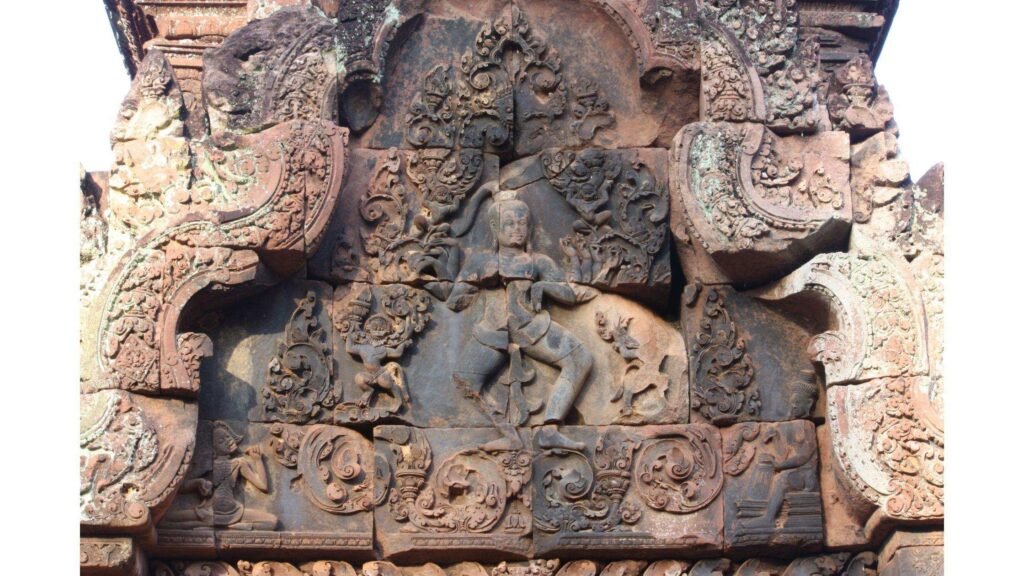
This picture is from a Hindu temple in Banteay Srei, Cambodia. At the centre is Shiva – as Nataraja – performing the cosmic dance. At the bottom left corner, you can see an emaciated woman watching in awe. That is Karaikal Ammaiyar. Why were Cambodians celebrating this? We must remember that the ancient Tamils (especially under the Pallavas and Cholas) traded extensively in the Far East. The cultural exchange was intense, and so the story of Karaikal Ammaiyar became famous in Kamboja Desa (Cambodia) too!
Here is the original story:
Karaikal Ammaiyar decided to worship Lord Shiva in his Himalayan abode at Mount. Kailasa. She walked all the way to the base of Mount Kailasa, but felt that it was too sacred for her to step on. And so she turned upside down and walked on her hands up the mountain. Shiva was so pleased with her penance that he came down and offered her a boon. Karaikal Ammaiyar said her only desire was to keep watching Shiva’s cosmic dance for eternity. So, he sent her to Thiruvalangadu temple (303 km from Karaikal) where she sang a set of hymns known as the ‘Thiruvalangadu Mootha Tirupadhigam’. She passed away there but it is believed that she is present in spirit even today, watching her lord dance.
PS: At Karaikal Ammaiyar’s birthplace in Karaikal, people celebrate the mango festival annually during the Tamil month of Aani (June-July). During the festivities, Lord Shiva is taken around the town in a chariot and devotees shower mangoes from the roof-tops!

